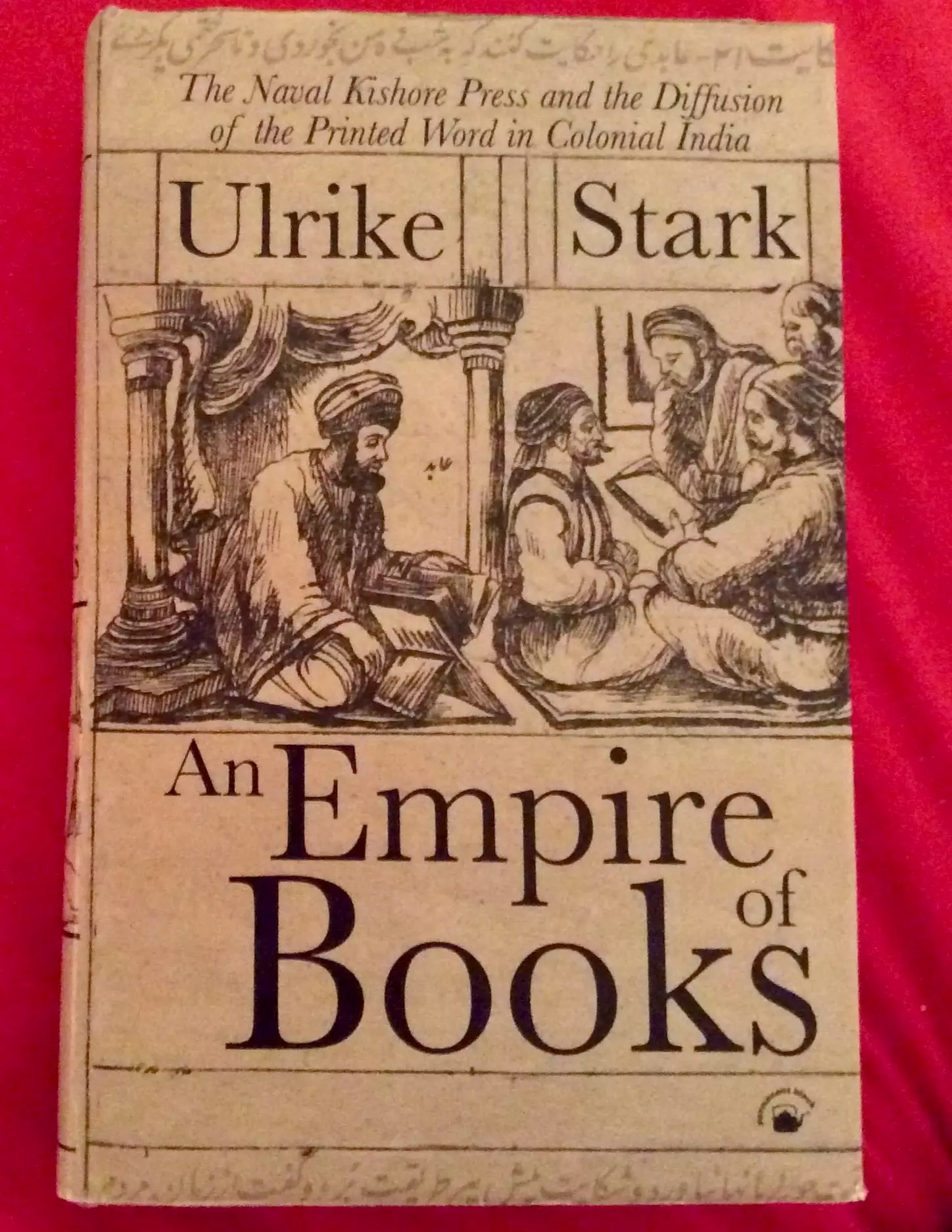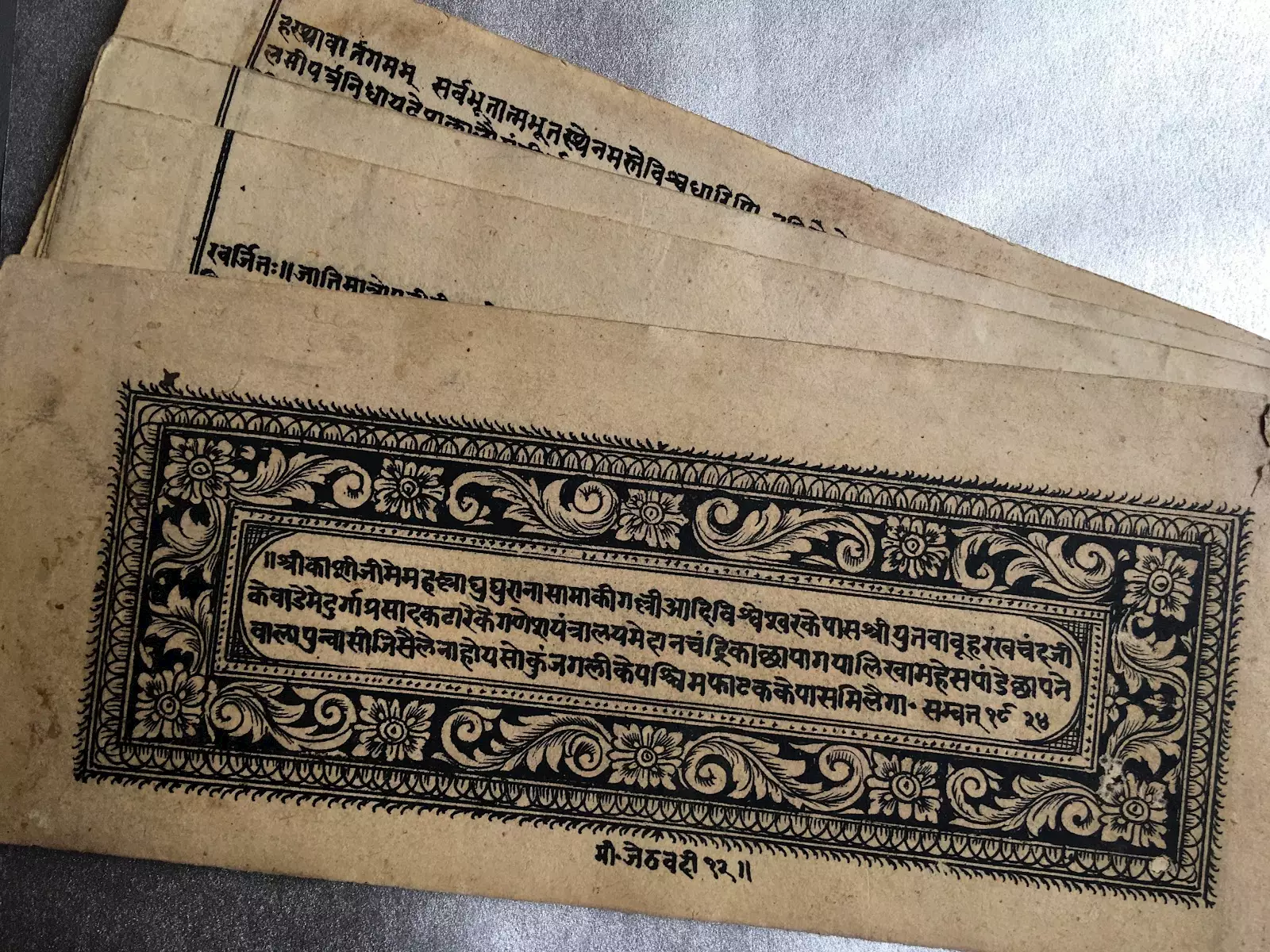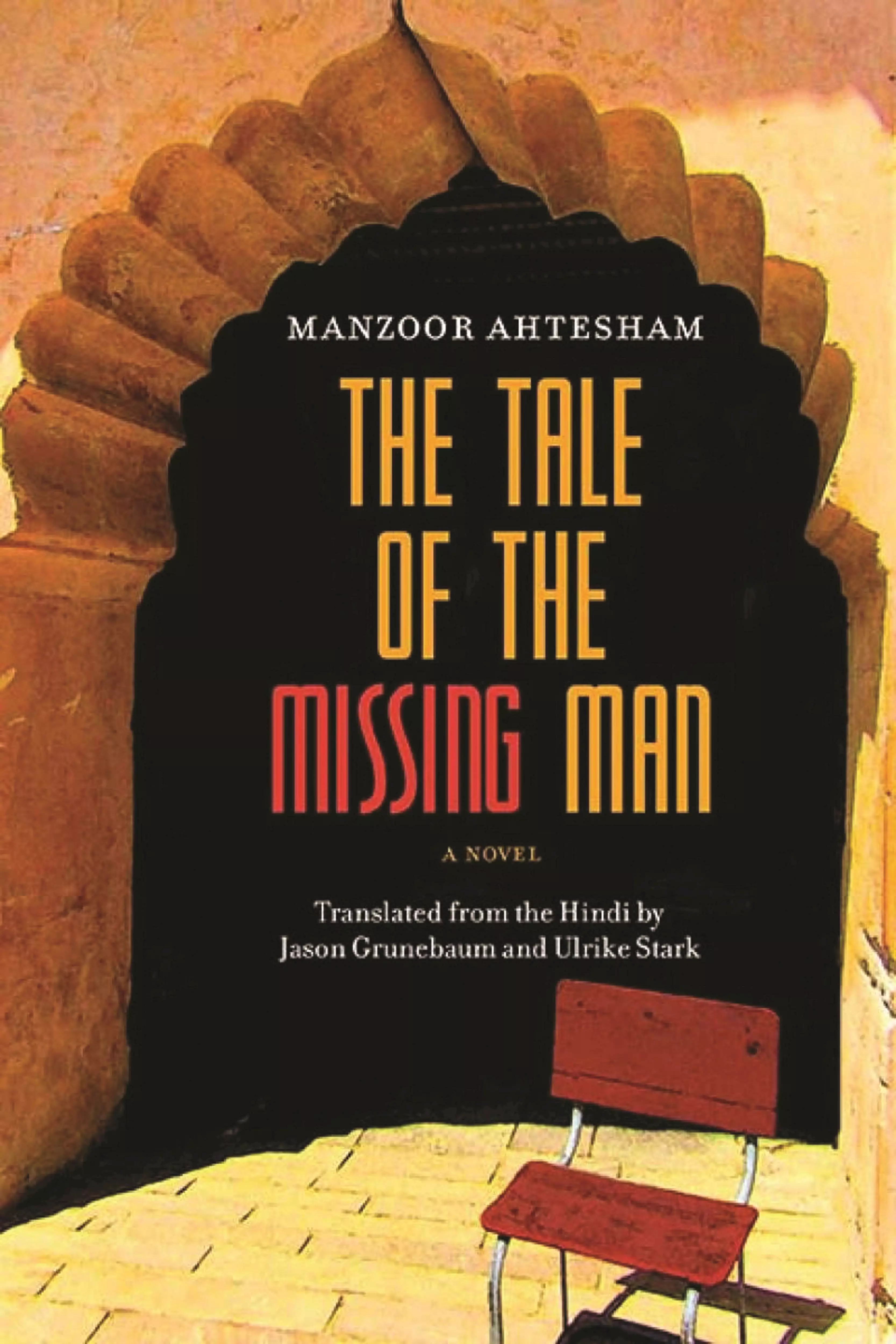Print History: Print Historian of North India - Ulrike Stark
With a formal training in literary studies and a formidable range of linguistic skills, Ulrike Stark has negotiated with aplomb the maze of languages and scripts which dominate north India. Working at the intersection of Hindi and Urdu, her landmark research has enriched Indian print history. Stark, who is a professor at the University of Chicago, has also translated novels from Hindi into English. In an email interview with Murali Ranganathan, she discusses her work and research interests and the many ways in which print history has evolved
28 Feb 2023 | By Murali Ranganathan
Murali Ranganathan (MR): At what point of time in your career did you realise that your research interests had evolved into book/print history? How did evolution happen? How does this complement your other research interests?
Ulrike Stark (US): The shift in my research interests happened some time after I had completed my PhD. I had recently joined the South Asia Institute of Heidelberg University and was looking into possible topics for my postdoctoral “Habilitation” project (the Habilitation in the German system is the qualification as full professor and involves completing a second book project). I was keen to move beyond literary analysis and into intellectual and cultural history.
Though I had always been fascinated by books as material objects, print history as a subject found me rather than the other way round: As it happened, a librarian at the South Asia Institute asked me one day to inspect a box of old and brittle books in Hindi and Urdu stacked away in the basement of the library. The box turned out to be a treasure trove: it was filled with Naval Kishore Press books. They formed the starting point for what has been a fascinating intellectual journey into South Asian print history and resulted in my monograph on the Naval Kishore Press of Lucknow.
Being a print historian has been integral to my other research interests, be it in modern Hindi literature, Indian education, or the social and cultural history of North India. I am currently completing a biography of the nineteenth-century educator Raja Sivaprasad of Benares, whose career illustrates the changes and opportunities wrought by print during the colonial period. Sivaprasad was, in CA Bayly’s apt words, “a self-created man of publicity,” who deftly used modern print media to advance his agendas as an educator, writer of textbooks, public intellectual, and self-published author. He even bought a printing press and tried his hand at editing a Hindi paper, the Simla Akhbar, for a while.
MR: You have written and published widely. Could you provide a brief overview of your publications? Which of your books do you consider the most important vis-a-vis print history?
US: My training in Germany was in literary studies (French, Spanish, Hindi and Sanskrit). I started out as a scholar of modern Hindi literature, with a dissertation on Hindi novels written by Muslims, including well-known authors such as Shani, Rahi Masoom Raza, Manzoor Ahtesham, and Abdul Bismillah.
I have also been interested in literary translation, and have co-translated, with Jason Grunebaum, Manzoor Ahtesham’s novel Dastan-e Lapata (The Tale of the Missing Man, 2018) and, with Smita Gandotra, Pandit Gauri Datt’s 1870 novel Devrani Jethani ki Kahani (A Story of Two Sisters-in-Law, 2022). While I continue to write on topics of Hindi literature, my research focuses on book and print history. This is where my passion lies.
An Empire of Books: The Naval Kishore Press and the Diffusion of the Printed Word in Colonial India (2008) is my most important contribution to print history, but each of my essays has tried to provide new insight into some understudied aspect of South Asian print history. For example, my article on Frederic Growse’s early translation of the Ramcaritmanas of Tulsidas addresses the question of the circulation and reception of Indian texts in the West; another piece has looked at the beginning of print modernity and the activities of early print entrepreneurs in colonial Benares.
My recent essay on early Qur’an publishing in India uncovers the pioneering role of Indian printers and publishers in making the Holy Book of Islam available to a mass audience; another essay explores the role and function of the “small book” in Indian rural environments through missionary tract production and distribution in the nineteenth century.

MR: Your book on the Naval Kishore Press is a landmark publication. Can you expand on how you approached the subject and the kind of research you undertook for the book?
US: I had no training as a print historian and only a vague sense of the methodologies and questions of print history when I began working on the Naval Kishore Press book. It was a steep learning curve that involved reading many of the classics of European book history—Chartier, Darnton, and Eisenstein —as well as book trade studies and publishing house histories.
Fortunately, the field of South Asian book history was just coming into its own, with the publication of Abhijit Gupta and Swapan Chakraborty’s edited volume Print Areas creating some early momentum. I remember reading Priya Joshi’s In Another Country and being quite blown away by it.
My research started off with a lot of archival and bibliographical work and involved compiling endless publication lists. Following my first visit to Lucknow, it also became clear that I was going to write a house history without having access to the publisher’s archive and business correspondence, which was no longer extant. Fortunately, the colonial archive turned out to be a major source of information. A lot of valuable information could also be gleaned from the books themselves. I must have browsed through hundreds of books.
MR: What are the challenges which historians working on print history in Asia have to face as compared to those working on the western world?
US: The challenges are many, but mostly relate to the state and accessibility of archives, and the state of preservation of printed materials (which are slowly disintegrating before our eyes, so to speak), as well as the variety of linguistic, paleographic, and other skills it takes to understand Indian print cultures in local and trans-regional perspectives. Locating materials, especially ephemera in Indian languages, can be enormously time-consuming.
For print historians studying production and distribution, the paucity or absence of publisher’s archives, their professional correspondence, and documentation on the book trade, are significant hurdles. (Darnton’s lament that “publishers usually treat their archives as garbage” clearly resonates in the South Asian context.)
Documenting and historicising readerships/audiences and reading practices, especially of non-elite readers, is a major challenge since they have left so few traces in the archive. This said, it is encouraging to see the exciting new work that is being done in the history of reading, perhaps the most elusive aspect of South Asian book history.
MR: How has the vocation of print/book history changed over the decades? How do you see it evolving over the next few years/decades, especially in the Indian context?
US: Print/book history has expanded tremendously and in productive ways, in both its empirical and theoretical agendas. New questions and areas of research include the geography of the book and study of local print cultures, the history of reading, libraries and archives, popular and ephemeral genres, the revived interest in material culture, the focus on newsprint, the history of censorship, the study of print technologies and their global transfer, print and the public sphere, to name just a few.
There is still a lot of work to be done on how non-elite and marginalised groups engaged with print, and how print operated outside metropolitan and urban centres. One particularly exciting, and long overdue, development in South Asian book history to my mind are the new conversations happening across the artificial divide of manuscript studies and print history.
My colleague Tyler Williams just finished a fascinating monograph on early modern Hindi manuscript culture that introduces us to a rich and varied literary culture through the materiality of its manuscript books.

MR: What is the role of serendipity in book/print history? What do you consider to be your important discoveries?
US: I’m glad you asked this question. I have always felt that there’s a special kind of serendipity at play in a book historian’s work. When all else fails, serendipity is your best friend. In a sense, Empire of Books was born out of a moment of serendipity and was enriched by many more such moments along the way. Moreover, while working on the Naval Kishore Press book in the UP State Archives in Lucknow, I came across a handwritten copy of Raja Sivaprasad’s will, which felt a bit like the archive nudging me to write another book.
Another serendipitous discovery happened quite recently: in my article on Qur’an publishing in India, I discuss a Qur’an printed in Calcutta in 1831, which features an image of three trees on its opening page. This figurative representation was quite startling and I couldn’t make sense of it, not only because of its distinctly “non-Islamic” look. I was consulting some works by the Scottish Orientalist John Gilchrist in a different context, when I came across the same decorative element in Gilchrist’s Oriental Fabulist (1803). The trees turned out to be a woodcut motif used by Calcutta printers in the early nineteenth century, adding a distinctly local touch to the Qur’an edition.
MR: Who are the print/book historians whose work has impressed and influenced you most? With respect to global print history in general and South Asia in particular? Books/articles which you consider important?
US: This question is difficult to answer, since there are so many. For global print history, Robert Darnton, Roger Chartier, DF McKenzie, Adrian Johns, Isabel Hofmeyr, and Nile Green have definitely shaped my own work. Among articles, one of my all-time favourites I make sure to read with my students, is McKenzie’s early “The Sociology of a Text: Oral Culture, Literacy, and Print in Early New Zealand,” which brilliantly illustrates his call for a new “sociology of texts'' approach within the field of bibliography.
For South Asia, everything written by Graham W Shaw has been illuminating. I’ve also benefited enormously from Francesca Orsini’s work and that of Anindita Ghosh, AR Venkatachalapathy, Rimi Chatterjee, and Rochelle Pinto, among others. The Book History in India series edited by Swapan Chakraborty and Abhijit Gupta has been very influential in opening up new perspectives.
More recently, younger generation scholars such as Jennifer Dubrow and Megan Robb have made exciting contributions to Urdu print history, in particular the study of newsprint. Aakriti Mandhvani has been working on popular print and genre fiction, while Priyasha Mukhopadhyaya is doing exciting work on reading and other forms of textual engagement. I’ve also become very interested in the work that’s being done on printing technology, typography, and graphic design by scholars such as Vaibhav Singh. It’s a really exciting time for the field.
MR: Is the compilation of bibliographies and book-lists, very much a part of the mid-twentieth century genre of print history, still relevant and practical in the twenty-first century?
US: Yes. It may no longer be “fashionable,” especially in the US academia, but given the very uneven state of documentation and the urgency of preserving a decaying paper archive, I still consider it relevant and fundamental to the field of print history in South Asia.
We would not be where we are today were it not for the painstaking bibliographical efforts undertaken by colonial figures like Rev James Long, or early Indian bibliographers like Krishnacarya and Imdad Sabri, whose contribution to Hindi and Urdu print culture is almost forgotten now. Or take modern bibliographic projects like Graham Shaw’s South Asia and Burma Retrospective Bibliography (SABREB), or Mofakhkhar Husain Khan’s bibliography of the Bengali book and his amazing bio-bibliographic study of Quran translations in South Asian languages. I keep going back to these sources. Since electronic and digital media have made historical documentation so much easier, I hope that such compilation efforts will continue alongside more theoretical and intellectual/cultural history-oriented approaches.
MR: How important is collaborative work in producing print history, especially while working on projects which call for a range of language and script skills?
US: Given the limits of any individual scholar’s linguistic and regional expertise, collaborative work is vital to creating synergies and the kind of conversations that are advancing one’s own work as well as the field as a whole. Collaborations across linguistic and geographical boundaries, and across disciplines, enhance our understanding of the stakes and theoretical import of South Asian print history and help us refine our methodologies.
I find collaborative work not only important to introducing new perspectives in my own research but also incredibly stimulating and enriching. There’s still so much to learn and discover, especially with regard to situating South Asian book history in both a global and global south perspective.


MR: Has print history become an easier vocation to practice in the age of the Internet? How have sites like Google Books, archive.org and many others changed the writing of print history? Which websites do you use most often?
US: Yes, in many respects. Not only has digitisation provided direct access to an unprecedented number of primary and secondary materials. I regularly use Google Books, Rekhta, and archive.org. but also consult the British Library websites and those of other academic institutions and digitised collections. And I read blogs on print and communication technologies.
Newspaper archives are another amazing resource, though digitisation of Indian language newspapers and periodicals has unfortunately been slow and uneven. But beyond the accessibility of texts, perhaps the one feature that has really changed my research as a print historian is searchability. I Google obsessively and often find answers to specific questions in the most unexpected sources on the Internet.
MR: Is print/book history now less about print objects, but more about the people who create and consume them, and exploring the contextual practices which frame this creation and consumption?
US: Yes and no. There is certainly a greater interest in questions of human agency, circulation, and intellectual and discursive networks, and more attention is given to readerships and consumption. I find this work enlightening and generative. It’s also good to see scholars from various disciplines integrating book history methods into their work.
But I also think that this question creates an artificial distinction between the material artifacts and the human actors that create, circulate, and consume them, when, in fact, they are mutually constitutive and cannot be separated from one another. So it’s not an either-or question between text and contextual practice. The study of the materiality of the book or printed artefact, to my mind, continues to be as important as ever.
MR: What is on your plate now?
US: My recent article on missionary tract printing was the first foray into a larger book-length project that seeks to investigate how print permeated the Indian countryside and explores the functions of the printed book, as text and material object, in low-literacy environments. I’m especially interested in colportage systems and the understudied figure of the colporteur or book hawker. Another project will take me back to my Lucknow roots, so to speak, and explore the history of the Matba‘ Sultani, or Royal Press, which was founded by King Ghaziuddin Haidar in 1819 and is generally known as the first Muslim-owned press in South Asia. But there’s also a fascinating history of Christian printing at the King of Awadh’s Royal Press waiting to be told.











 See All
See All